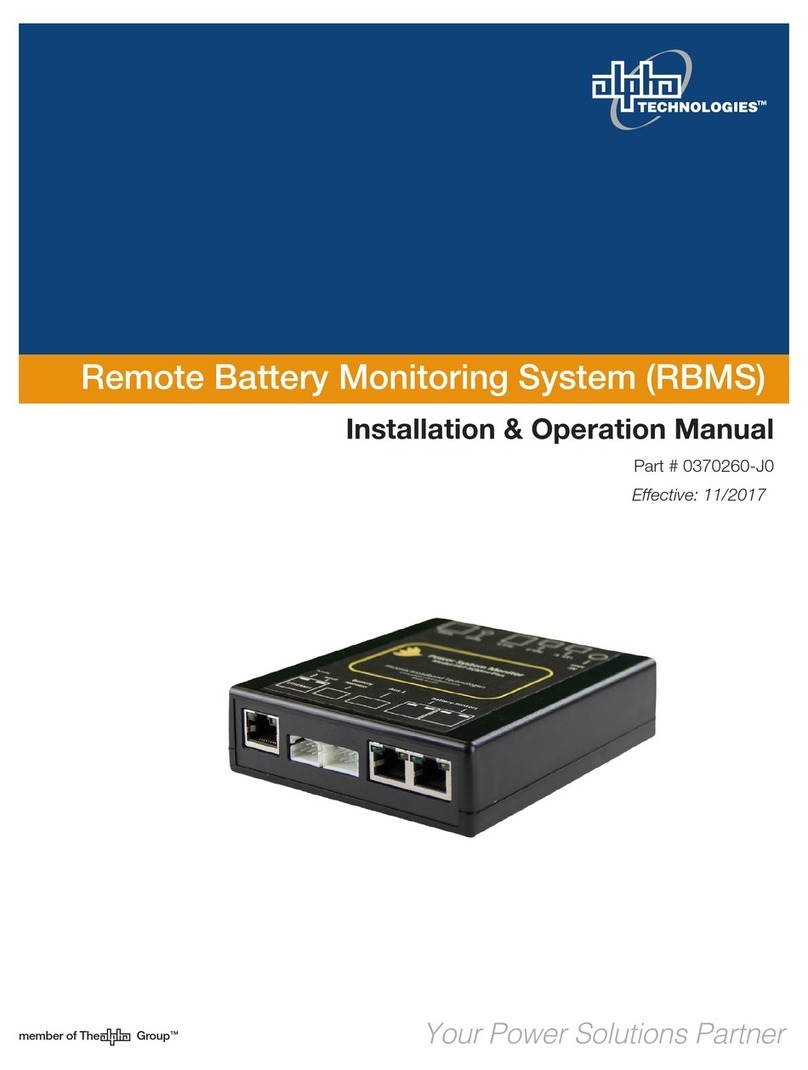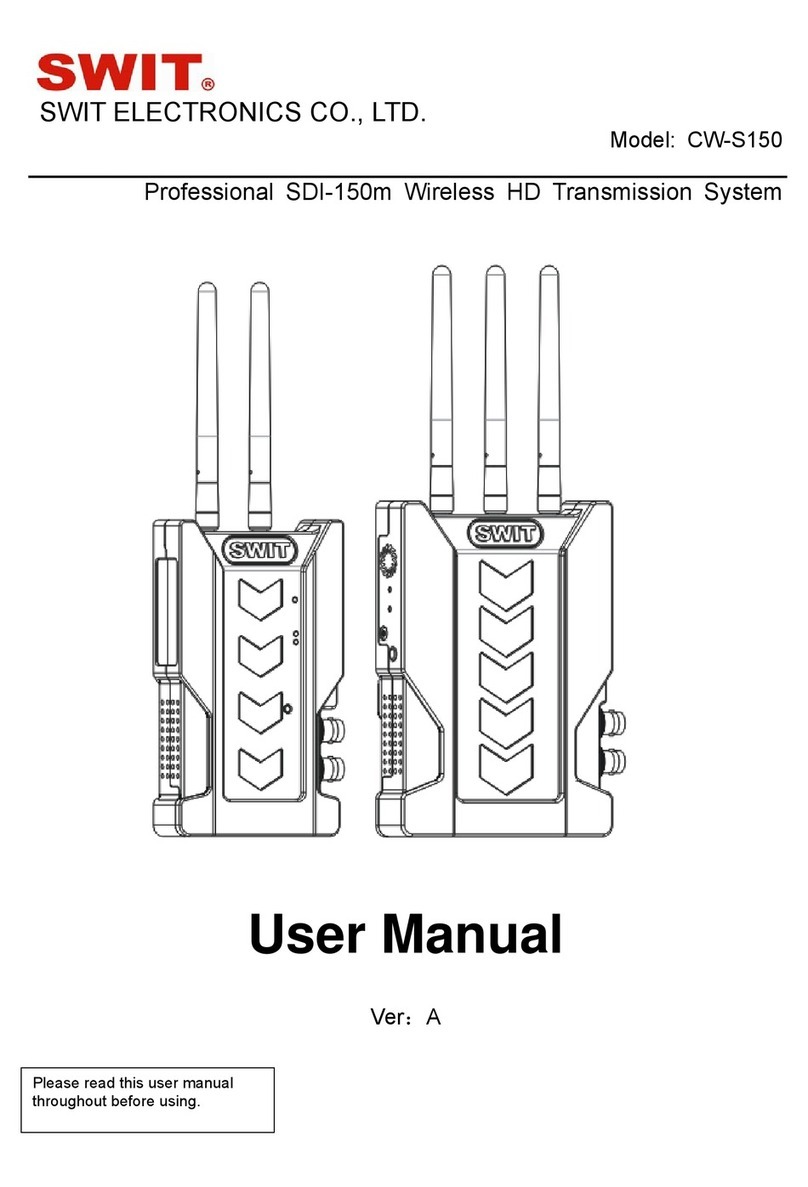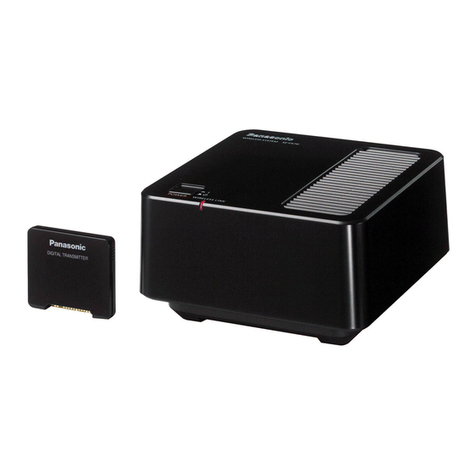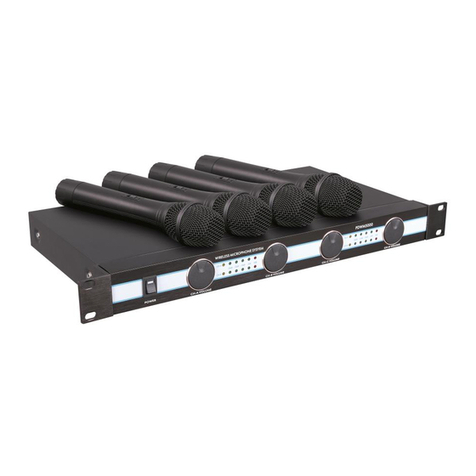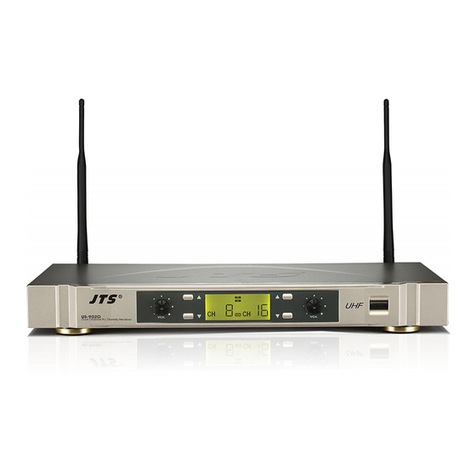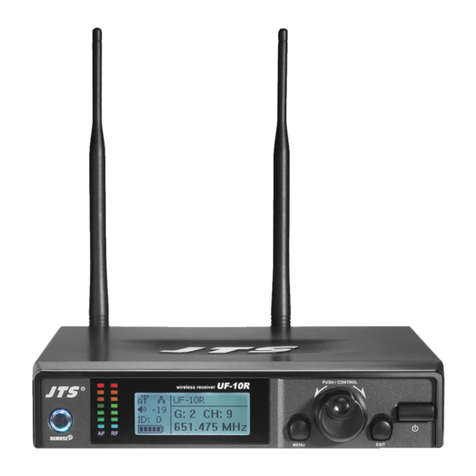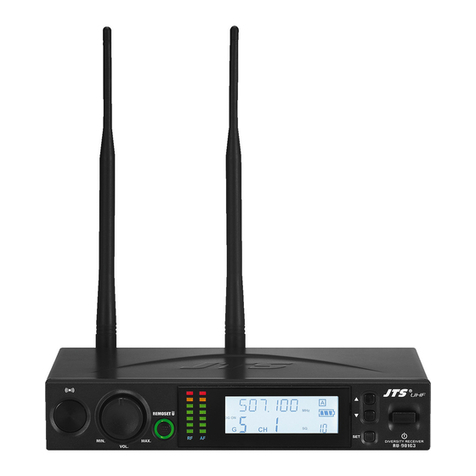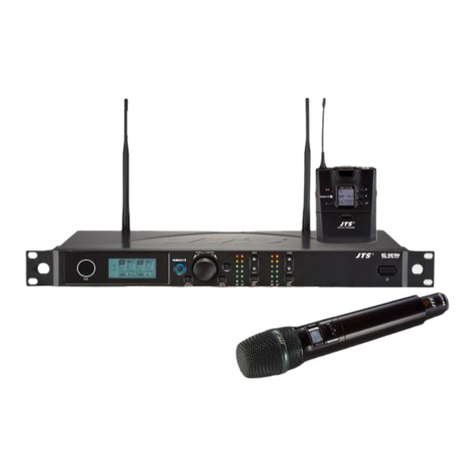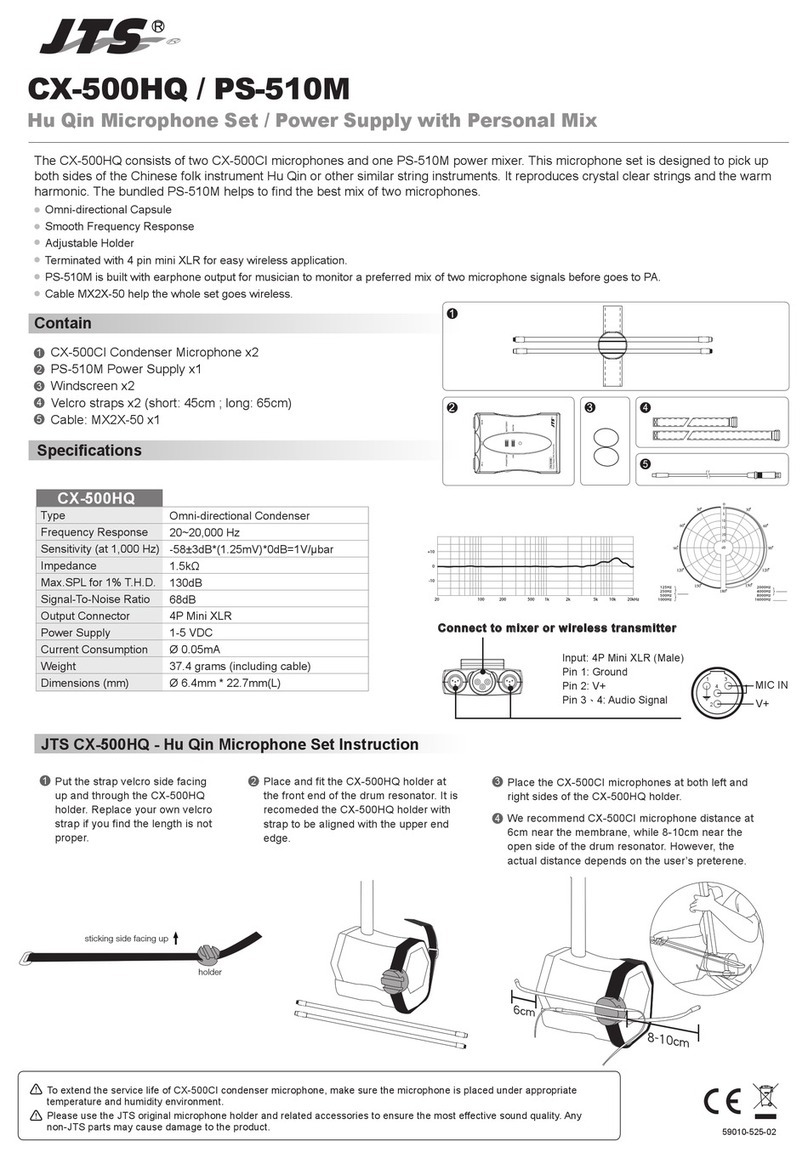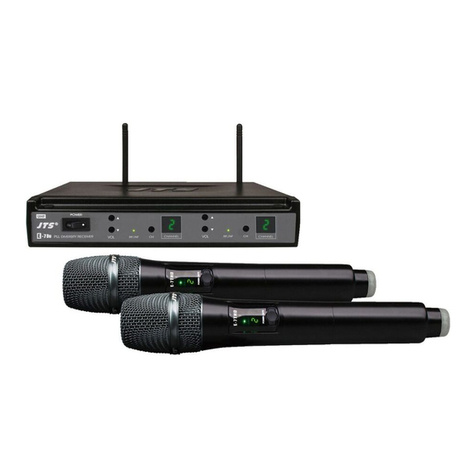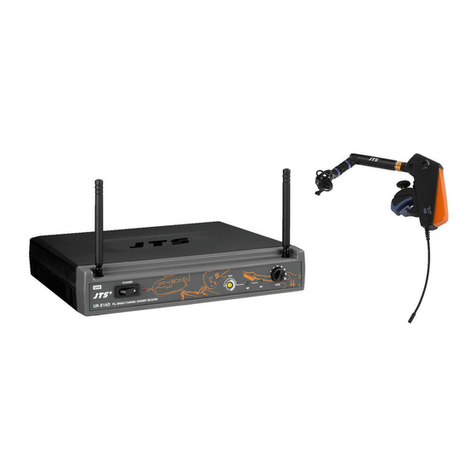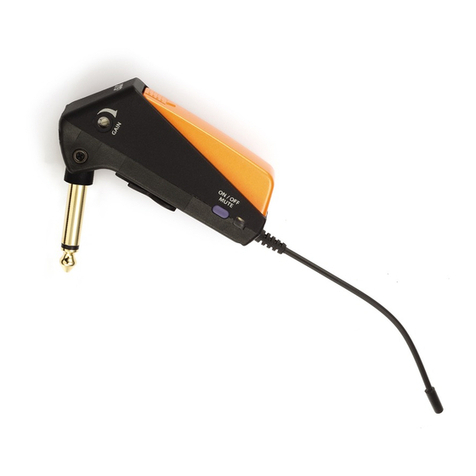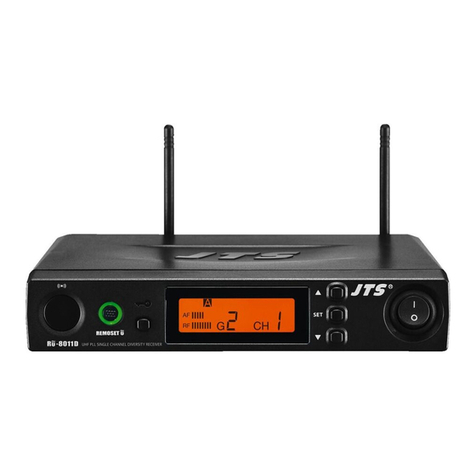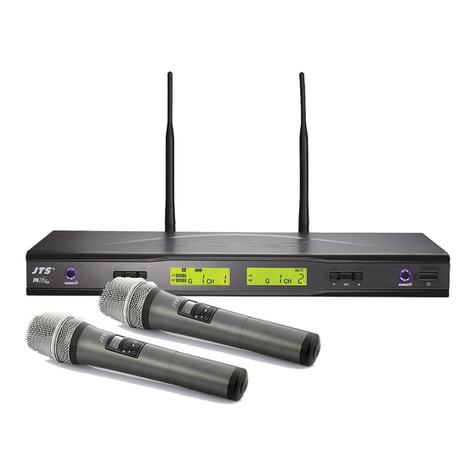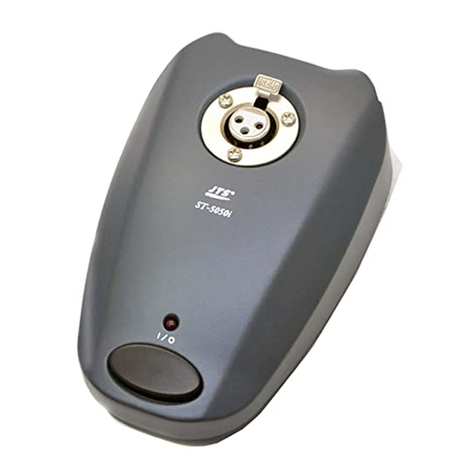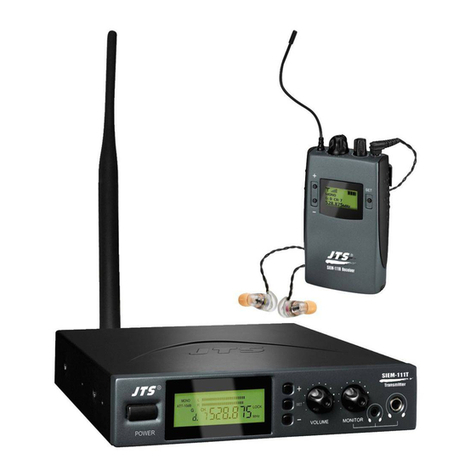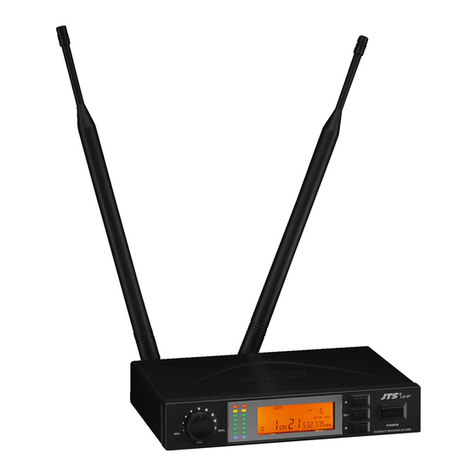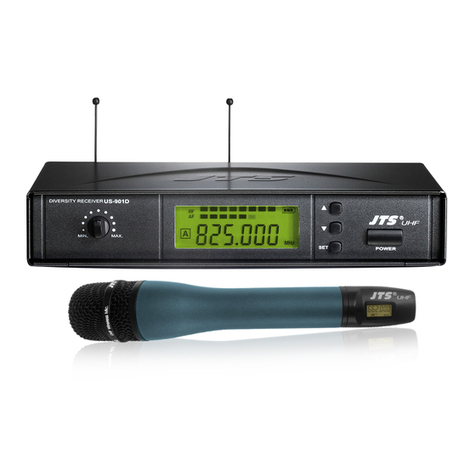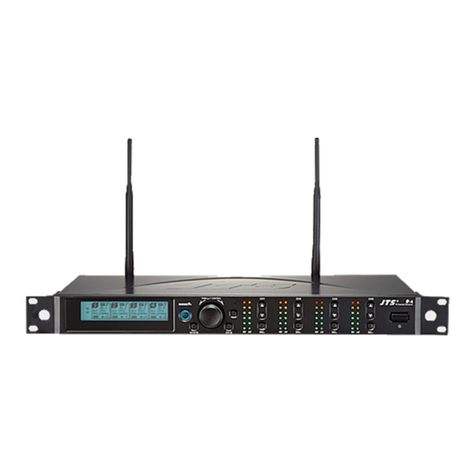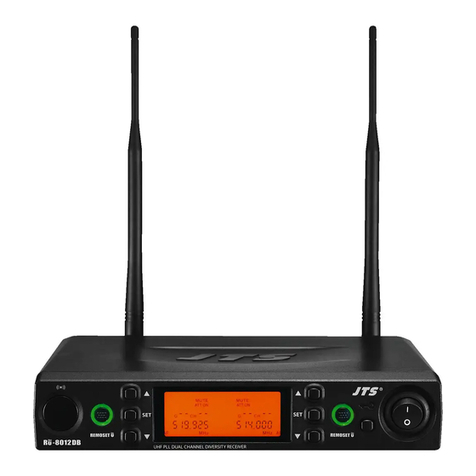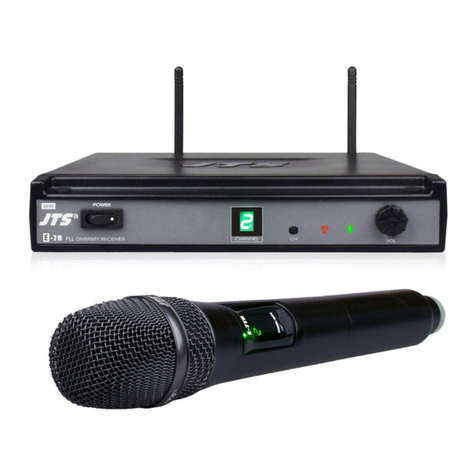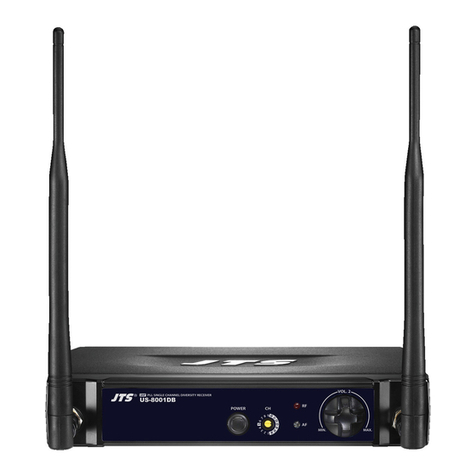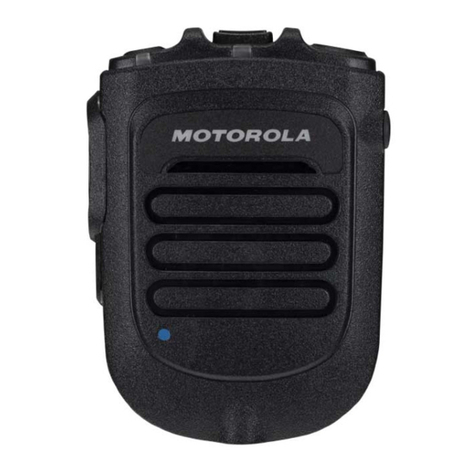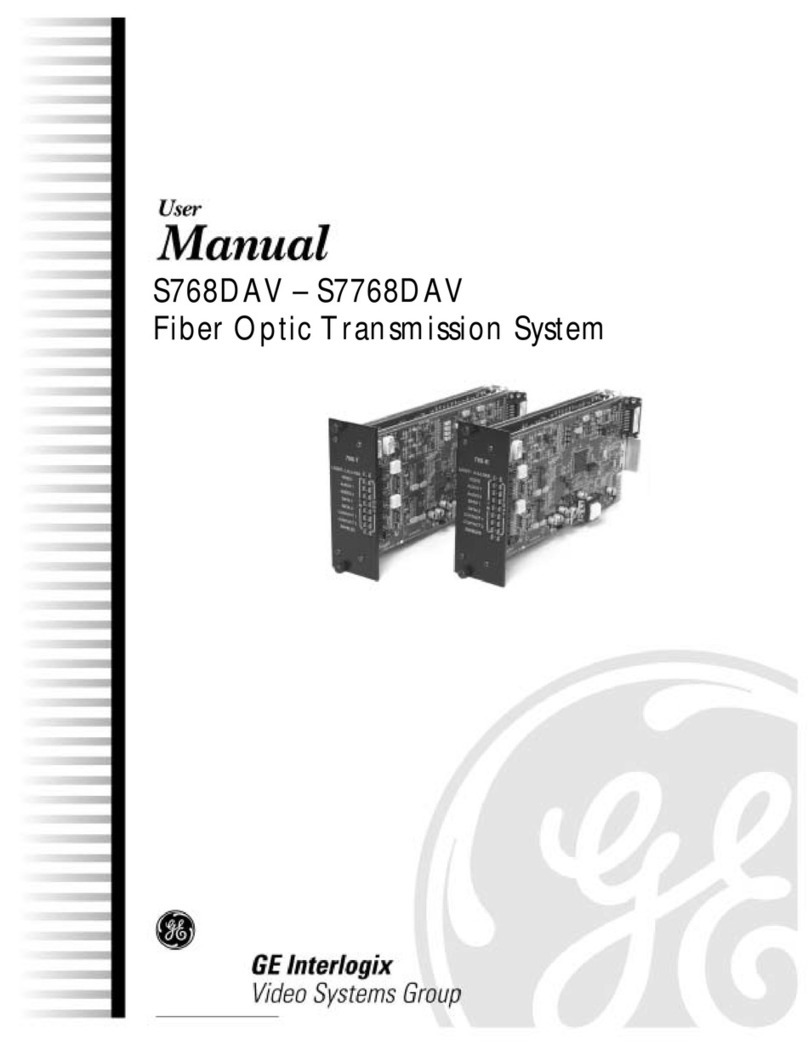1. Important Caution
2. Features
Always makes all connections before plugging the unit into an AC power outlet.•
Do not leave the device in a place neither with high temperature nor high humidity.•
Always do not handle the power cord with wet hands!•
Keep the devices away from re and heat sources.•
Operated in UHF band where there is less RF interference than the VHF band.•
Equipped with a SAW lter can benet to reducing spurious RF content.•
Including balanced XLR output and unbalanced 1/4” output.•
Integrated antenna of the handheld transmier benets less hindrance for performer.•
Built-in noise mute and squelch circuit mode can validly resist extraneous noise.•
Body-pack transmier is available to work together with a lavalier mic. or headset mic.•
Space-saving half-rack housing design.•
3. Specication
3-1 Receiver
3-2 Handheld Transmitter
Model No....................................
Frequency Preparation......
Carrier Frequency Range
Frequency Stability...............
S/N Ratio...................................
T.H.D..................................
Display..............................
Display Contents...................
Controls............................
Audio Output Level............
AF Output Impedance.......
Squelch.............................
Operation Voltage.................
Output Connector................
Dimension(m/m)...............
US-8010D / US-8010
Crystal
600~960 MHz
±10KHz
> 105dB
<0.6%@1KHz
LED
Antenna, RF/AF Status Power On/O,
Audio Level
-12dB
600Ω
Pilot Tone, Noise and Mute
12-18 VDC, 150mA
1 XLR Balanced Socket
1 Unbalanced Ø6.3mm Phone Jack
210mm (W)* 40mm (H)* 171mm (D)
Mode No.............................................
Frequency Preparation..............
Carrier Frequency Range.........
RF Outputs........................................
Stability.................................
Frequency Deviation..................
LED Display......................................
Controls................................
Spurious Emissions.....................
Audio Frequency Response..
Battery..................................
Mh-700 / Mh-800 / Mh-700D
Crystal
600~960 MHz
10mW
±10KHz
±48KHz
Low Baery, Power On/O
Power On/O
<-50 dBC
50~16,000 Hz
UM3, AA 1.5V*2

